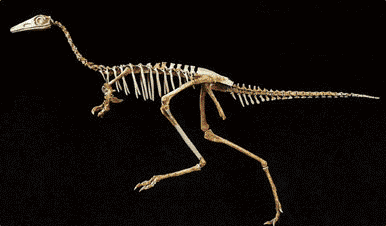
DRAWING DINOS

How do artists start with a bunch of dinosaur bones and create lifelike drawings of these extinct animals? Here are some tips from Mick Ellison, a paleo-artist at the Museum.
What You’ll Need:
- a side-view picture of a dinosaur skeleton (like ones in this PDF)
- tracing paper (or other thin paper)
- pencils
- color pencils, crayons, markers, or other art supplies for coloring
What To Do:
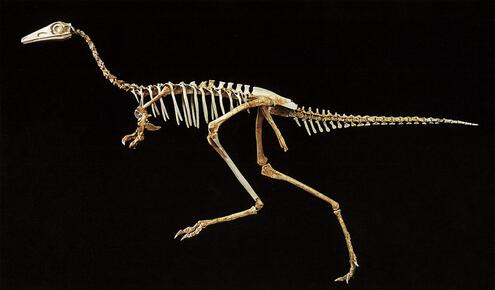
STEP 1
Start with the bones
Find a picture of a dinosaur skeleton. You will use these bones to help you draw a picture of what the dinosaur may have looked like when it was alive. In this example, the artist chose Mononykus.

- Use a picture of a complete skeleton so you don't have to make too many guesses about missing pieces.
- Select a skeleton picture that gives a side view of the animal.
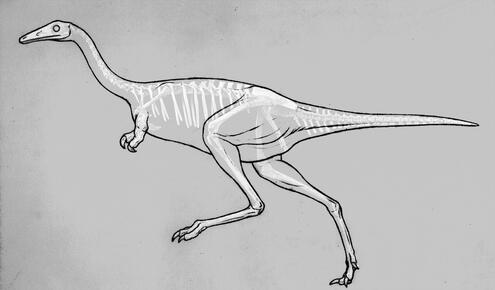
STEP 2
Give those bones a body
Put a piece of tracing paper over the skeleton. Use the bones to help you draw where the dinosaur's flesh might have been. As you can see in this example, the thigh has a lot of muscle.

- Think about where to add flesh and how much you want to add to the bones. Ask yourself: Did some areas on the body have more flesh than on others? Was the dinosaur fat from a recent meal or skinny from starvation? What parts of your body have the most flesh? Why do you think this is?
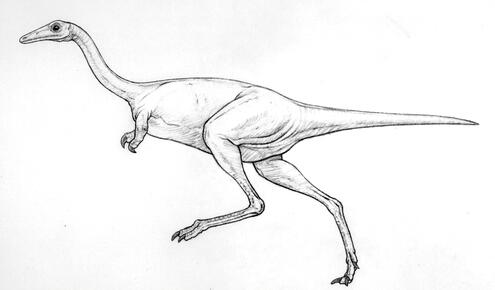
STEP 3
Shadow time!
Use shading to make your dinosaur look like it will pop off the page! To make this Mononykus more lifelike, the artist put shading on the belly and on the backs of the legs.

- Imagine the Sun shining on your dinosaur. Where would the shadows be? This will help to "round out" the animal's form.
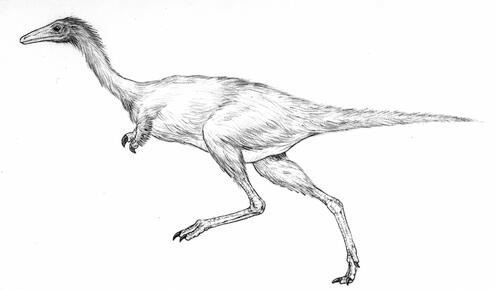
STEP 4
Scaly skin and maybe feathers
Add details such as feathers and skin texture. Fossils of Mononykus show that this flightless dinosaur had feathers. Although fossils don't tell us anything about skin color, you can pick a skin color (or colors) that you think this animal may have had. And fossil evidence show that some dinosaurs were covered in scales!

- Artists study birds to help them decide how to feather their dinosaur drawings. They think about the different kinds of feathers birds have on different parts of their bodies.
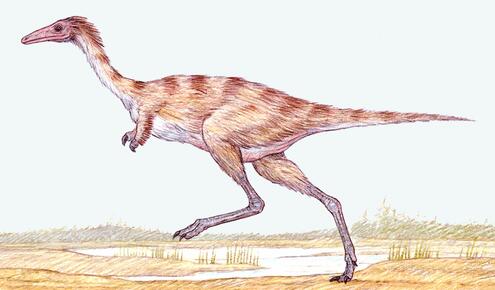
STEP 5
There's no place like home
To make your drawing more lifelike, put the dinosaur in an environment with other prehistoric plants and animals. For example, Mononykus lived in a desert with many other kinds of dinosaurs, lizards, and small mammals.

- Find out what the environment was like when your dinosaur was alive. Did it live in a forest? A tundra? A swamp? These details will give you an idea of what your dinosaur's home looked like.
- What plants and animals lived in the same environment and at the same time as the dinosaur you are drawing? You can add them to the background too!
Now it's your turn! Print out this PDF and try drawing these dinosaurs by following these five steps.




 Biodiversity
Biodiversity
 Brain
Brain
 Genetics
Genetics
 Marine BiOLogy
Marine BiOLogy
 MicrobiOLogy
MicrobiOLogy
 PaleontOLogy
PaleontOLogy
 ZoOLogy
ZoOLogy
 AnthropOLogy
AnthropOLogy
 ArchaeOLogy
ArchaeOLogy
 Astronomy
Astronomy
 Climate Change
Climate Change
 Earth
Earth
 Physics
Physics
 Water
Water
